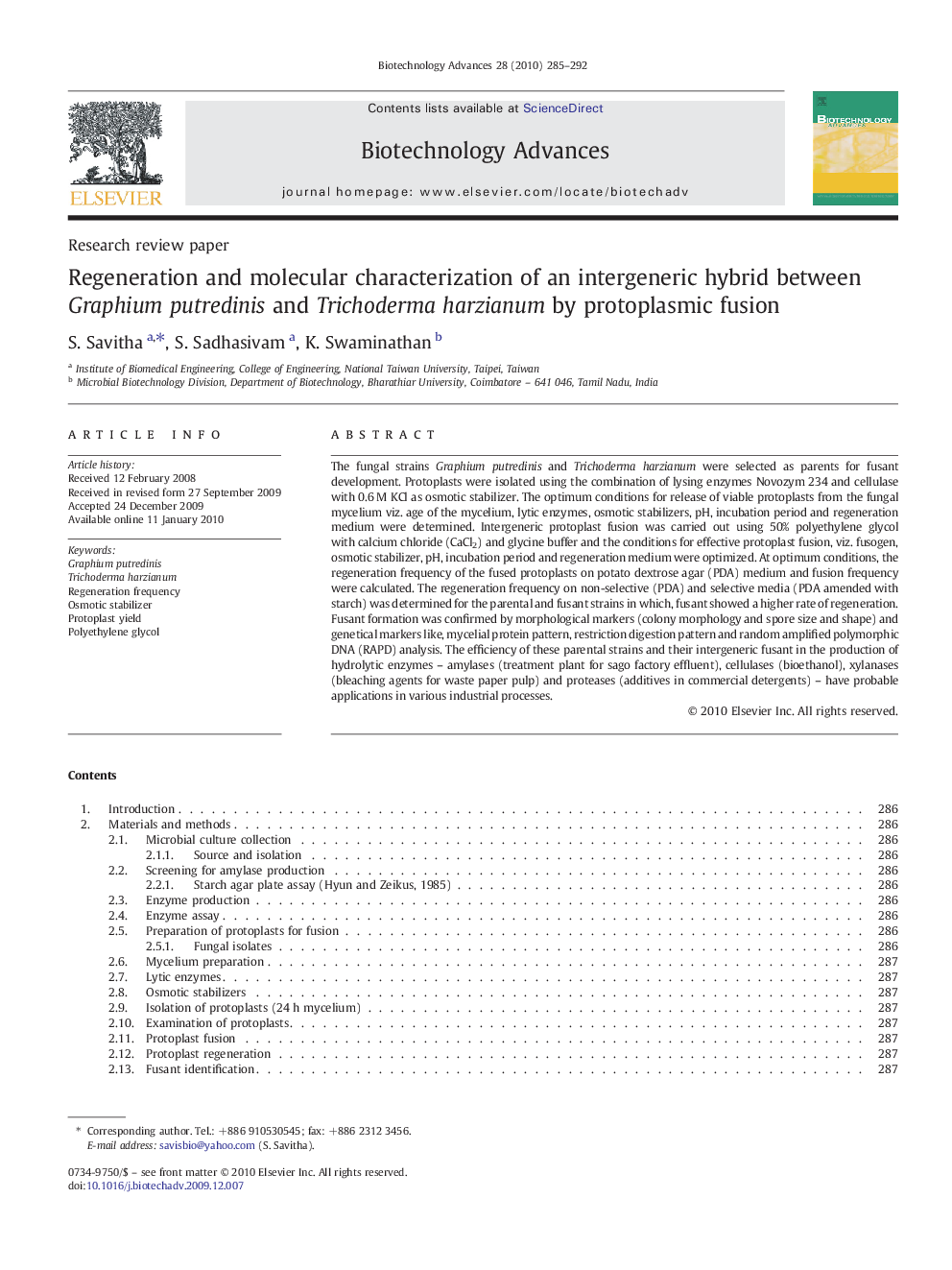| Article ID | Journal | Published Year | Pages | File Type |
|---|---|---|---|---|
| 14701 | Biotechnology Advances | 2010 | 8 Pages |
The fungal strains Graphium putredinis and Trichoderma harzianum were selected as parents for fusant development. Protoplasts were isolated using the combination of lysing enzymes Novozym 234 and cellulase with 0.6 M KCl as osmotic stabilizer. The optimum conditions for release of viable protoplasts from the fungal mycelium viz. age of the mycelium, lytic enzymes, osmotic stabilizers, pH, incubation period and regeneration medium were determined. Intergeneric protoplast fusion was carried out using 50% polyethylene glycol with calcium chloride (CaCl2) and glycine buffer and the conditions for effective protoplast fusion, viz. fusogen, osmotic stabilizer, pH, incubation period and regeneration medium were optimized. At optimum conditions, the regeneration frequency of the fused protoplasts on potato dextrose agar (PDA) medium and fusion frequency were calculated. The regeneration frequency on non-selective (PDA) and selective media (PDA amended with starch) was determined for the parental and fusant strains in which, fusant showed a higher rate of regeneration. Fusant formation was confirmed by morphological markers (colony morphology and spore size and shape) and genetical markers like, mycelial protein pattern, restriction digestion pattern and random amplified polymorphic DNA (RAPD) analysis. The efficiency of these parental strains and their intergeneric fusant in the production of hydrolytic enzymes – amylases (treatment plant for sago factory effluent), cellulases (bioethanol), xylanases (bleaching agents for waste paper pulp) and proteases (additives in commercial detergents) – have probable applications in various industrial processes.
